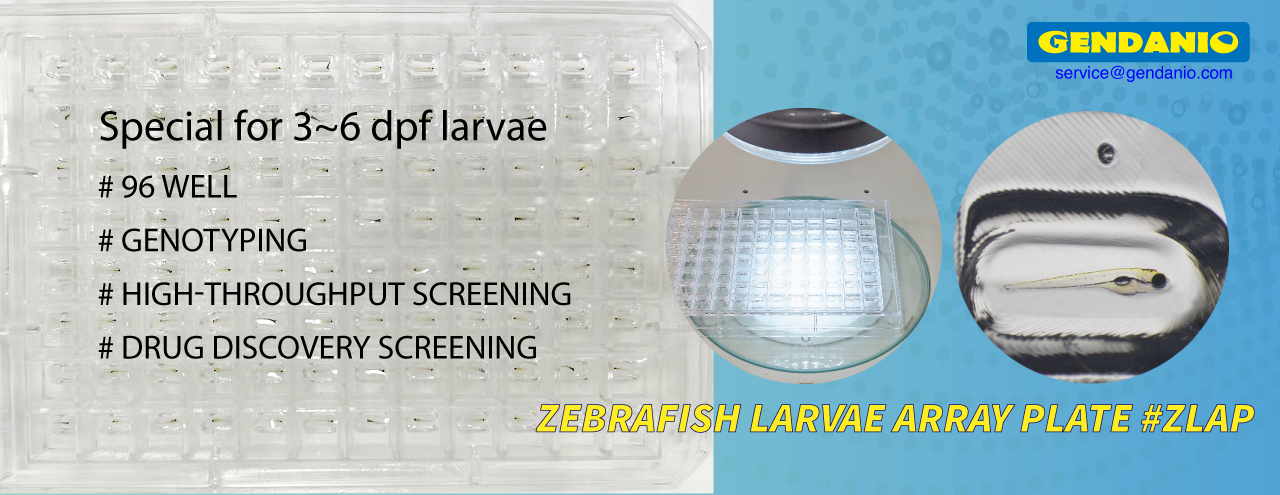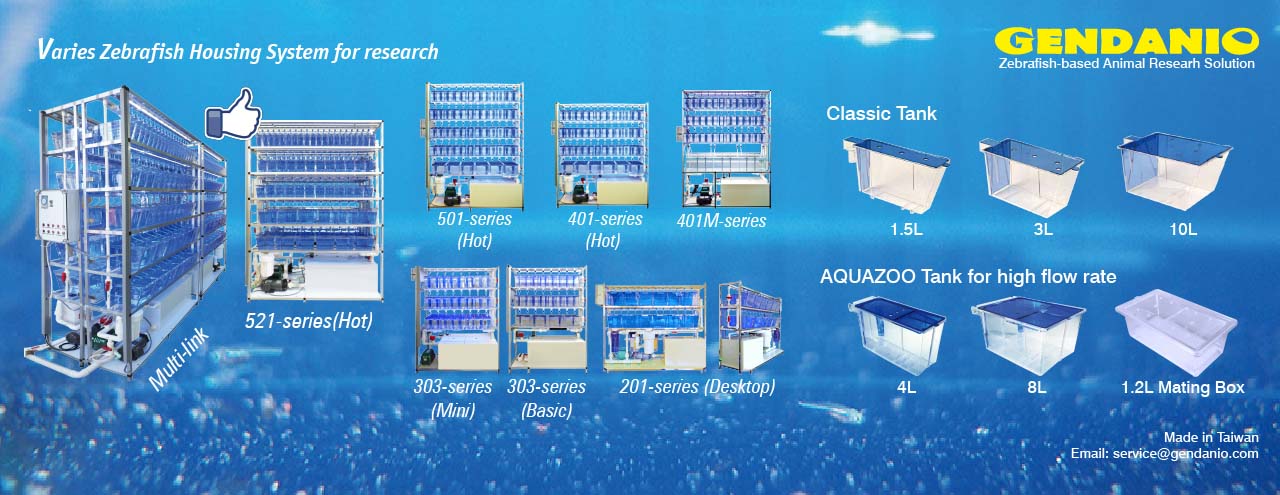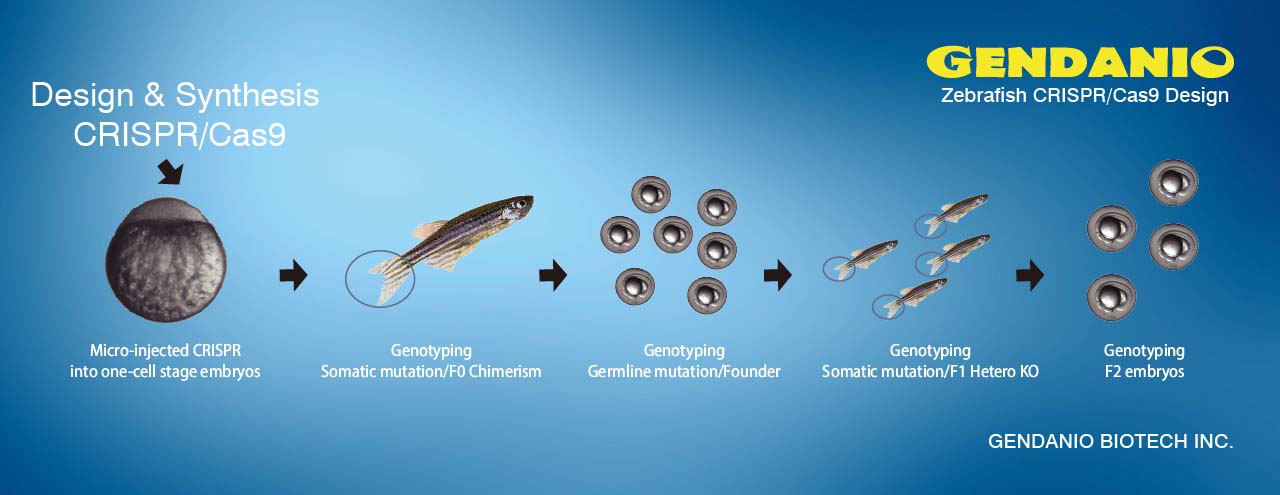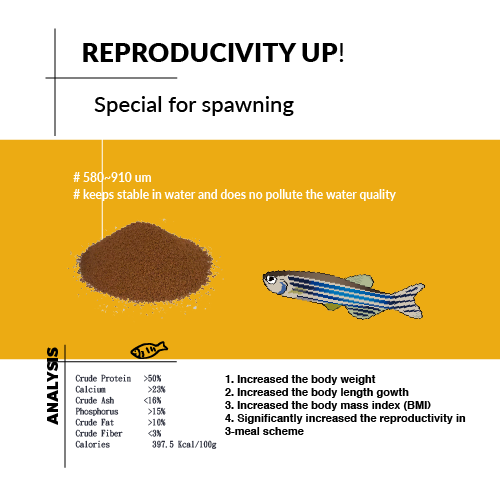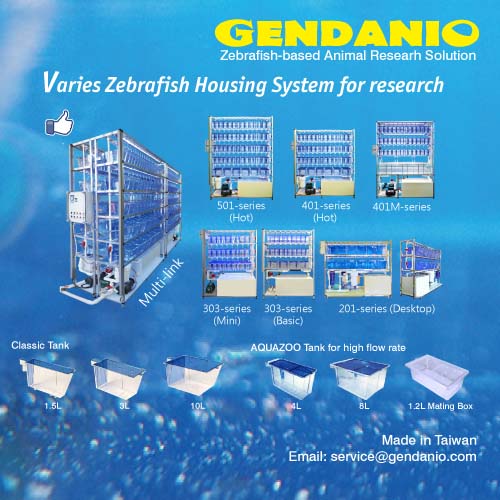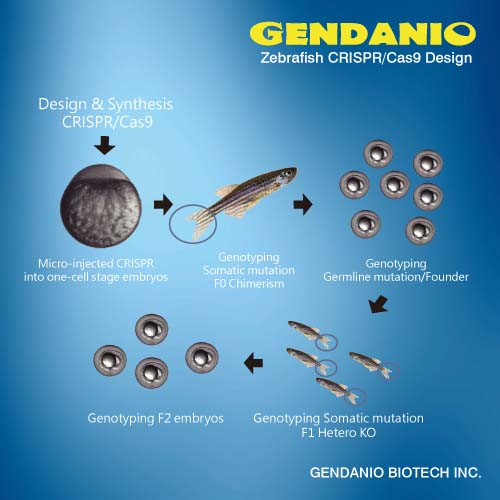BY MARY HARRIS, COPY EDITOR
PUBLISHED: OCT 19, 2011
Finding a Cure: FSU biol-ogy pro-fes-sor James Hoerter checks on the fish tanks and oper-a-tions. Hoerter and stu-dents are study-ing melanoma and how stem cells can help to find a cure. Torch File Photo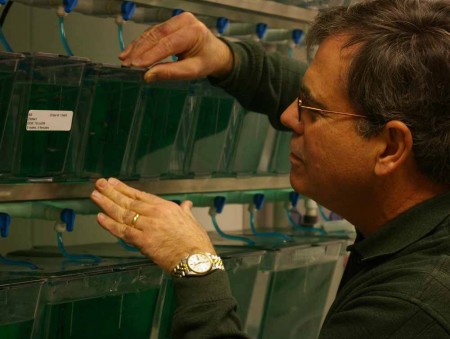
James Hoerter and FSU stu-dents are involved in a project that could ulti-mately lead to a cure for some types of cancer.
They are inter-ested in the study of melanoma, a malig-nant tumor asso-ci-ated with skin can-cer, and how stem cells relate to that research and could prove to be the key.
Hoerter, a FSU biol-ogy pro-fes-sor, declined to be inter-viewed for this arti-cle, pre-fer-ring the focus to be on the stu-dents and the research they are involved in.
Patrick Bradley, an FSU stu-dent from Fremont, is the lab-o-ra-tory man-ager for the research project. Bradley has a B.S. in Pre-Medicine Biology and is cur-rently work-ing towards his degree in Biotechnology.
Research can be daunt-ing, but Bradley says he enjoys the inter-ac-tion with oth-ers in the sci-en-tific community.
“What I most enjoy about the research is the coop-er-a-tion that we receive in the lab and from other researchers around the coun-try and the world,” Bradley said.
According to Bradley, he “keeps track of all of the exper-i-ments that are going on in the lab and helps new peo-ple get started with the research.”
Zebrafish, a striped trop-i-cal fish about the size of the pinky fin-ger, are stud-ied in this exper-i-ment becuase their stem cells are almost iden-ti-cal to humans.
“Zebrafish research is rel-a-tively new and many of the researchers main-tain an excited atti-tude that makes the work fun,” Bradley said.
Why zebrafish?
For one they are inex-pen-sive to care for and despite their dis-tance on the evo-lu-tion-ary tree from humans, we share many similarities.
“Zebrafish have many sim-i-lar-i-ties to humans in how they develop melanoma. Many of the genes are sim-i-lar to ours and that makes them a very good model to use,” Bradley said.
Since zebrafish are so iden-ti-cal to humans in their stem cells, it is pos-si-able to deter-mine what affects the sun has on humans by observ-ing the affects the sun (ultra-vi-o-let light) has on the zebrafish in the experiment.
In order to see the dam-age melanoma is doing to the Zebra fish at the genetic level, the researches use ultra-vi-o-let light.
This light is the same light that an aver-age per-son would get at a day at the beach. The researchers care-fully mea-sure how much light the fish receive.
“Zebrafish can regen-er-ate many of their structures…they use stem cells that are posi-tioned through-out their bod-ies to fully regen-er-ate their tail fins in a cou-ple of weeks,” Bradley said.
Bradley went on to say, “We can link abnor-mal devel-op-ment to UV radi-a-tion that they received ear-lier and that infor-ma-tion strength-ens the case for the impor-tance of stem cells in the devel-op-ment of dis-ease and melanoma in particular.”
Zebrafish can regen-er-ate more than just their tail.
“They can also regen-er-ate car-diomy-ocytes (heart mus-cle cells), repair exten-sive nerve dam-age, and regen-er-ate tis-sues in their eyes,” Bradley said.
It should be noted that no zebrafish are harmed in any of the exper-i-ments done at FSU.
The National Institute of Health just pro-vided a grant to Ferris for the research on melanoma. Bradley said the grant would most likely be used on equip-ment, chem-i-cal sup-plies, fish and habi-tat areas for the fish to live in.
This project has been going on for more than two years and the efforts of those involved have not gone unrewarded.
“We have found some pre-lim-i-nary results and are con-stantly adding data to our col-lec-tion. Repeated tri-als are always needed in this kind of research and when-ever pos-si-ble pub-li-ca-tion is involved. The results must be ver-i-fied and we use a lot of sta-tis-tics,” Bradley said.
The project first began at FSU when Hoerter became inter-ested in the research while on a trip in Ireland. He then started lay-ing the ground-work for the research and project at FSU.
Hoerter was awarded the Ferris Foundation for Excellence Merit Grant in 2009. He then pur-chased a zebrafish habi-tat in order to begin the research project.
According to the College of Arts and Sciences web-site, Hoerter sees the research lab to be an exten-tion of the classroom.
“A research lab is one of the most effec-tive ways to teach stu-dents to think as a sci-en-tist, to exper-i-ment, ana-lyze and eval-u-ate data, and then com-mu-ni-cate and defend the sig-nif-i-cance of the results to the sci-en-tific com-mu-nit,” the web-site says.
The research is not strickly lim-ited to those in Hoerter’s class-room or those in a spe-cific field of study.
“I got involved in the research by orig-i-nally com-ing to the weekly meet-ings and lis-ten-ing to what was hap-pen-ing in the lab.
“I advise oth-ers who want to fol-low what is hap-pen-ing with the research, and pos-si-bly want to get involved, to stop into the lab and talk to some-one or attend the weekly meet-ing,” Bradley said.
For more infor-ma-tion on weekly meet-ings, email Bradley at
Soruce: fsutorch

